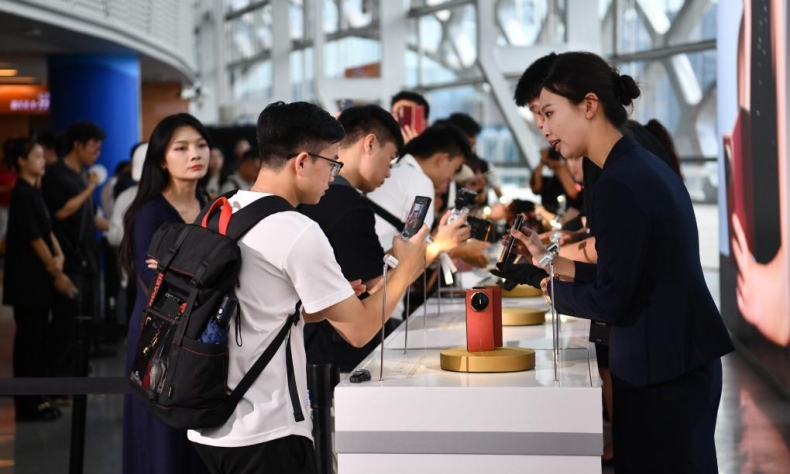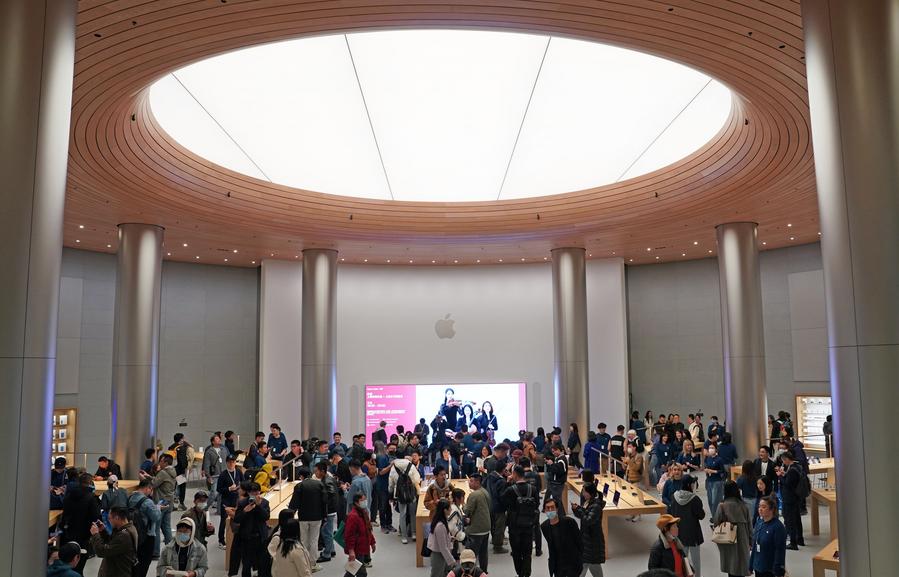Distance, or Distinction?

Americans excel at making breakthroughs from nothing, which is often seen as the most important, while Chinese are skilled at applying them extensively. However, the world needs both the breakthroughs and their extensive applications.
Apple and Huawei, the two tech giants from the U.S. and China, both released their latest smartphones on September 10. The biggest selling point of the iPhone 16 series, aside from its globally leading 3-nanometer chip, is its Apple Intelligence feature. Apple claims it is the world’s first native artificial intelligence (AI) smartphone. Meanwhile, Huawei’s Mate XT is hailed by the company as its most innovative and disruptive product, being the world’s first mass-produced tri-foldable phone. When fully unfolded, the display reaches 10.2 inches, with its thinnest point measuring just 3.6 mm, offering a user experience comparable to that of a small tablet.
The Huawei Mate XT has an initial price of 19,999 yuan (about $2,810), three times the starting price of the iPhone 16 series. However, even before its launch event, the product had received over 1 million pre-orders in one single day. The Huawei Mate 70 series, set to be released in the fourth quarter of this year, is seen as the iPhone 16 series’ biggest competitor in the Chinese market. According to data released by research firm Counterpoint Research on September 10, Huawei overtook Apple in the second quarter of 2024 with a 15-percent market share in China, compared to Apple’s 14 percent.
A widely held view is that the business competition between Huawei and Apple is seen as a microcosm of the broader China-U.S.
relationship. Indeed, these two companies from the U.S. and China each have their distinctive qualities: Apple is regarded as a symbol of American technology and culture, having developed many groundbreaking products that, in a sense, have driven progress in our era. Meanwhile, Huawei, as a private enterprise in China, has faced severe sanctions from the Western world amid ongoing tensions in China-U.S. relations. Despite this, the company maintains a strong drive and strives to make breakthroughs in core technologies independently.
These two companies also reflect, to some extent, the development philosophies of their respective countries. Apple, despite ongoing consumer criticism of its conservative approach to design and materials in recent years, has consistently maintained industry-leading standards in core hardware and software. On the other hand, although Chinese companies like Huawei still lag behind their American counterparts in core technologies such as chips and artificial intelligence, they leverage China’s comprehensive industrial system and supply chain to turn diverse industrial designs into reality. Additionally, with better cost-performance ratios, these Chinese companies make once unattainable hi-tech products more accessible, bringing them into the homes of ordinary people.

Take Huawei’s recent launch of the tri-foldable phone. Although many phone manufacturers, including Samsung of the Republic of Korea, have showcased concept devices, Huawei is currently the only company in the world able to turn this concept into reality and mass-produce it. Additionally, many Chinese companies are accelerating their research and development in this field. Many consumers believe that the prices of similar products will significantly decrease in the future. In the Chinese market, the current mainstream smartphones are priced between 2,000 and 3,000 yuan, which is approximately $280 to $420.
China and the U.S. have demonstrated different philosophies and values in the broader field of technology. In a 2023 interview, Elon Musk, a leading figure in American tech, assessed that China is 12 months behind the U.S. in artificial intelligence. However, Chinese entrepreneurs have a different perspective. On May 23, during the European Tech Innovation Conference in France, Robin Li, CEO of Internet giant Baidu, discussed how the development of AI in China differs from that in the U.S. and Europe. Li did not use the term “distance,” but rather “distinction.” He believes that while the U.S. and Europe are more inclined toward foundational large models, China is more focused on applications, always seeking ways to find practical uses for AI.
In daily life, many AI products often come from American tech companies, such as Apple’s AI models on smartphones, ChatGPT for chatting and translation and Sora for video generation. However, China is also at the forefront of AI applications worldwide. For example, Huawei’s smart mining, smart ports and meteorological large models are primarily focused on enterprise-level applications. China’s AI tends to integrate with its own strengths in industrial sectors, empowering traditional industries.
From this perspective, there may be no real competition between the U.S. and China. Many ideas proposed by Americans that were once considered unattainable have already been turned into reality by the Chinese and are now widely applied in societal production and daily activities. There is a self-deprecating saying among Chinese people that Americans excel at making breakthroughs from nothing, which is often seen as the most important, while Chinese are skilled at applying them extensively. However, the world needs both the breakthroughs and their extensive applications.
 Facebook
Facebook
 Twitter
Twitter
 Linkedin
Linkedin
 Google +
Google +










